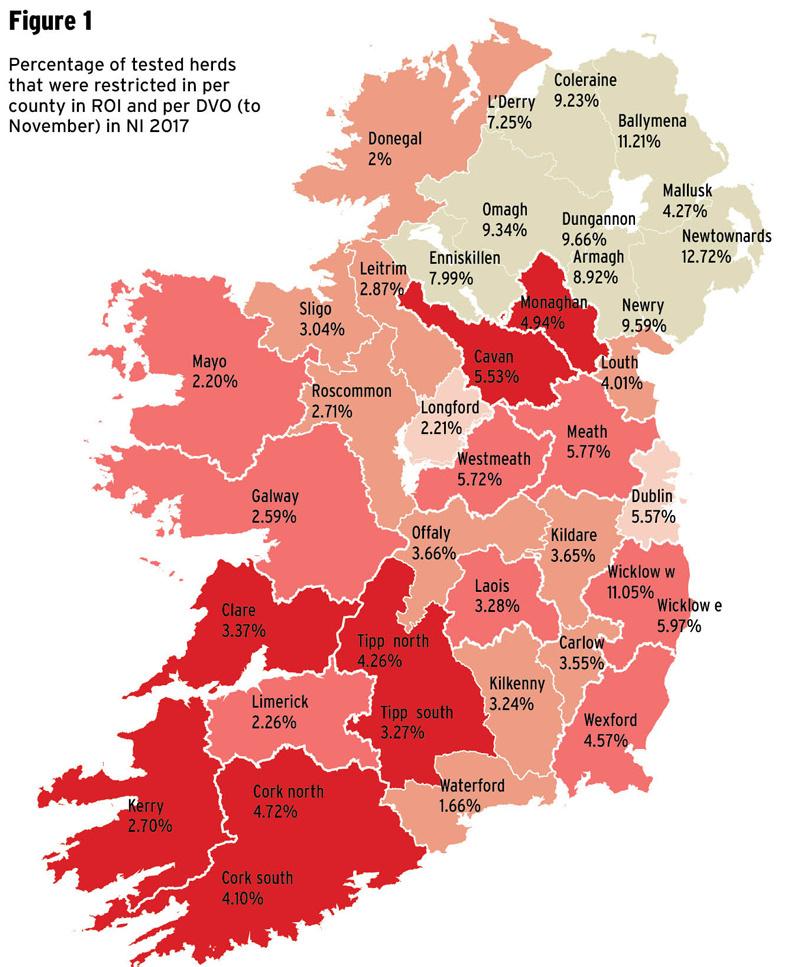The efficacy of the TB eradication programme has been called into question by the latest CSO statistics, which reveal little progress in eradication of the disease.

The efficacy of the TB eradication programme has been called into question by the latest CSO statistics, which reveal little progress in eradication of the disease.

The Average Per Thousand (APT) of infected animals has increased nationally from 1.84 to 1.94, while the herd incidence rate has only fallen marginally, from 3.88% to 3.47%, in the last five years.
In February, Minister for Agriculture Michael Creed announced that a review of the current TB eradication programme would be undertaken in conjunction with nationwide TB badger vaccinations.
However, as farmers wait for both the findings of the review and country-wide vaccinations, the persistence of TB blackspots and the overall lack of substantial improvement emphasise the need for a renewed plan to tackle the disease.
West Wicklow has the highest TB incidence rate in Ireland for the third year running. Some 11.05% of herds there were restricted with TB in 2017, although this is a slight drop on the 2016 level.
The APT of cattle in Kerry with TB jumped from 1.65 at the end of 2015 to 2.62 in 2017.
The Iveragh Peninsula was particularly hard hit last year, with 366 reactors removed and 75 herds were restricted.
Northern Ireland
TB rates in Northern Ireland (NI) are cause for equal concern.
Herd incidence in NI has increased from 6.44% in 2013 to 9.25% in November 2017, the most recent statistics available.
The percentage of TB-free herds in NI is the lowest it has been since 2013, with just 88.2% of herds officially TB-free.
Increasing TB rates in two of the three Ulster counties in the Republic point to significant problems for the province of Ulster as a whole, with Cavan seeing 5.53% of its herd and Monaghan 4.94% of its herd restricted with tuberculosis during 2017.
Read more
TB reactors hit five-year high
Progress on TB in west Wicklow
Watch: badgers may spread TB further than thought
Department of Agriculture takes action in Kerry TB cases






SHARING OPTIONS: